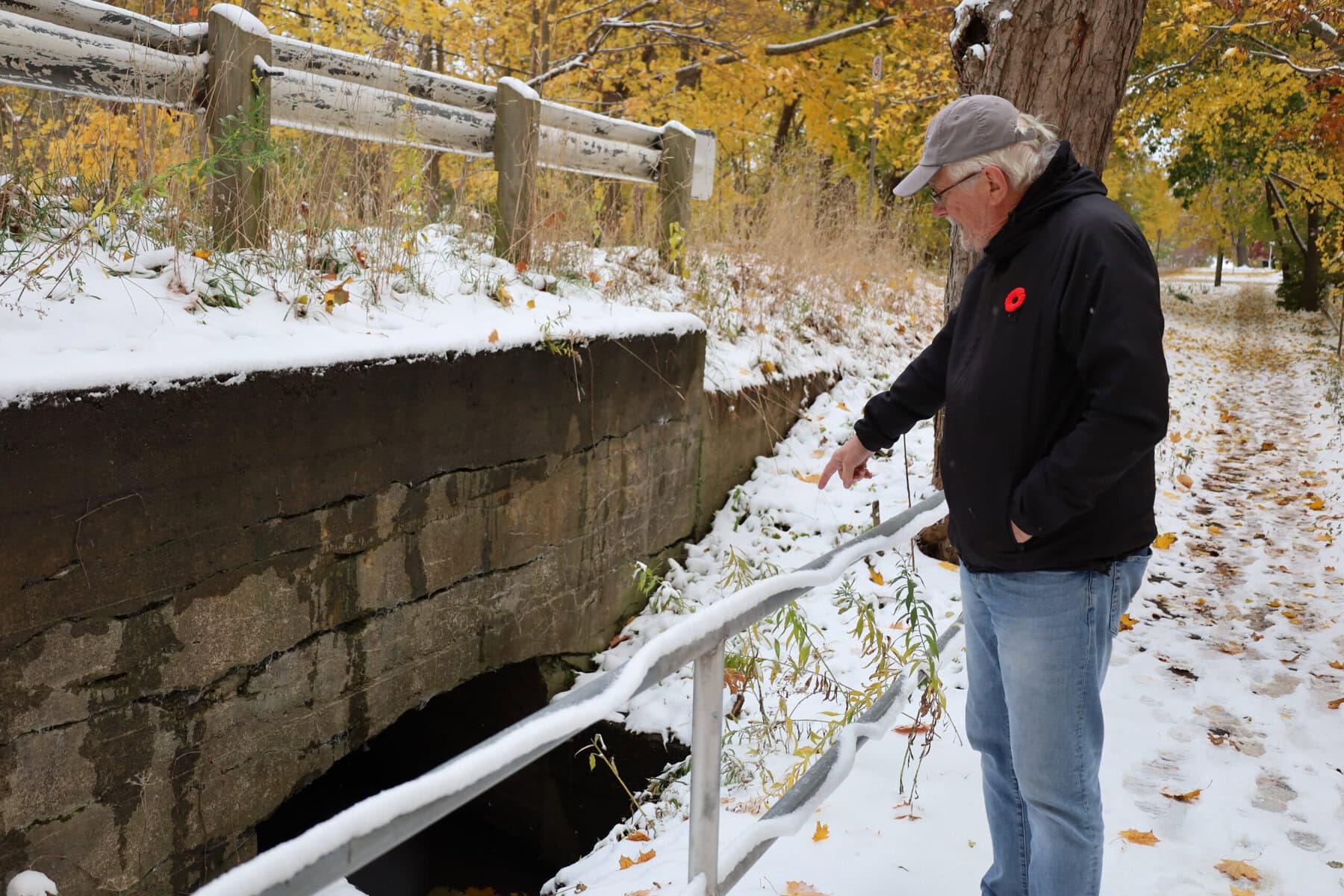A Niagara-on-the-Lake resident says the former Parliament Oak school redevelopment could worsen flooding along the nearby One Mile Creek if groundwater from the site isn’t properly managed during construction.
The Town of NOTL says no water can be pumped or drained from the property at 325 King St. until the developer files a detailed groundwater management plan.
The plan must show where the water will go — either into the storm or sanitary sewer systems, with proper testing and approvals — and how it will be tested, treated and monitored before any release.
Until then, “they are not permitted to discharge water off-site,” the town’s public works and infrastructure services department said.
The only work currently allowed on the site is shoring and caisson installation, “which are required to stabilize the site and prevent safety issues.”
The property will be the future site of a hotel from developer Two Sisters Resorts.
Ron Simkus, a director with the NOTL Residents Association, said he’s concerned that work below the water table could alter groundwater flow feeding One Mile Creek and worsen flooding if not carefully controlled.
Simkus said he spoke with Ontario’s Ministry of the Environment, Conservation and Parks, which told him agencies are still waiting for the developer to submit formal notice outlining its dewatering plans before any permits or approvals can proceed.
Simkus said that the ministry said the developer has two options: either pump untreated water from the site directly into the (sanitary) sewer line, subject to Niagara Region’s approval, or discharge it by gravity into the storm sewer system up to the daily limits legally allowed.
The Lake Report asked the ministry whether it had received any notice or submission from the developer and how it would review plans to ensure water quality standards are met before discharge. It did not respond to those questions by press time.
Simkus said he observed what appeared to be water being pumped toward a storm sewer on Nov. 4. He said a ministry compliance officer later told him no hose or pump was visible when inspected and site personnel denied any discharge.
The Lake Report also asked the ministry whether a compliance officer visited the site around Nov. 5 following reports of pumping, but it did not respond to those questions by press time.
Concerns about how the redevelopment could affect flooding along the creek are not new.
Engineering studies used to support a zoning change for the property drew scrutiny from residents last year, including Simkus, who argued that the development sits in a sensitive watershed and that even temporary dewatering could change flow paths or increase discharge downstream.
A Niagara Peninsula Conservation Authority stewardship guide notes that about 93 per cent of the land in the creek’s watershed is privately owned, meaning protection of its water and habitat quality depends heavily on landowners working with governments and agencies.
In an email, it said the property at 325 King St. lies outside its regulated limit and it “does not have a streamflow gauge” on the creek.
As such, activities at the site “do not require permission” from the conservation authority, which “defers to the municipality regarding any proposals or applications for this property.”
Town staff said it ensures the developer’s compliance through regular site visits and can issue fines if limits are exceeded. But the creek is not a municipal drain under Ontario’s Drainage Act.
Property owners are responsible for maintaining the sections that run through their land, excluding culverts at road crossings.
The town said several culverts crossing the creek have been replaced over the years and are functioning as intended, with another set for 2026 at Regent Street. Replacing culverts helps reduce localized flooding.
But the creek remains part of the conservation authority’s official floodplain mapping, informed by a 2005 watershed study that also recommended culvert upgrades and stormwater improvements along the creek, it said.
“To the town’s knowledge, the (conservation authority) has not updated this mapping since the completion of the 2005 report, despite the town having undertaken several culvert replacements and drainage improvements since that time,” said the town.
Simkus said that’s the problem.
“The 2005 report recommended new mapping within the following 20 years to take in urban development and watercourse maintenance,” he said. “It’s 2025 today.”
The town said it could not yet say whether groundwater pumping will continue after construction or how it could affect the creek, as the necessary information has not been submitted.
But, Simkus said, “the fact that the foundation of the lower parking garage is clearly identified as below the identified water table might give (it) a clue that pumping will be necessary.”
He said the association is recommending several moves to mitigate the risk of One Mile Creek’s flooding.
This includes a new study of the creek’s water flow and flooding risks, requiring independent peer reviews of drainage reports before new developments are approved and clearly identifying and holding accountable the engineers responsible for stormwater designs.
It also includes prioritizing repairs to the St. Davids retention ponds as part of the town’s asset management plan to improve system-wide flood resilience and considering a stormwater utility fee to help cover infrastructure costs.









